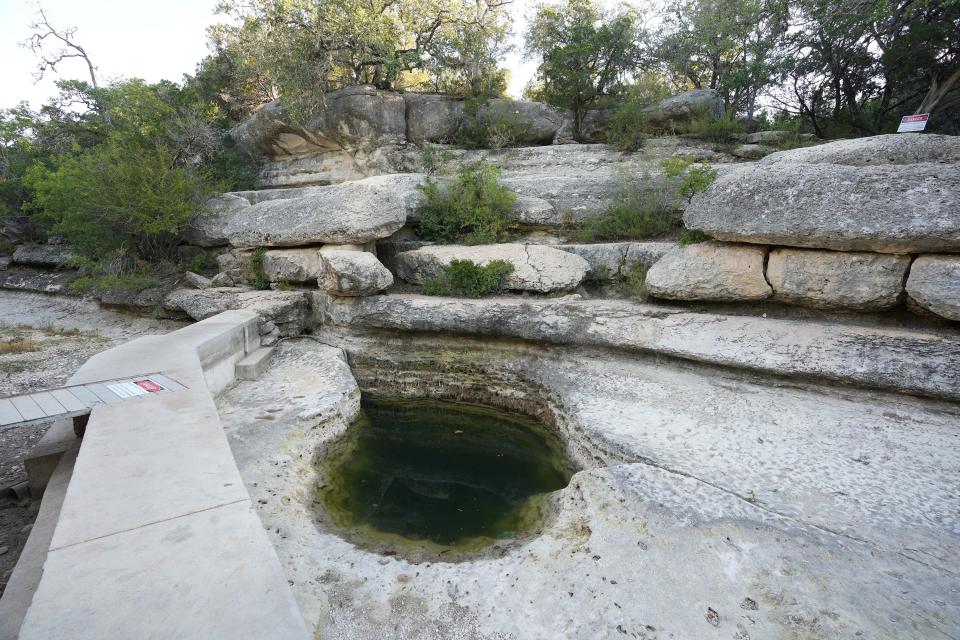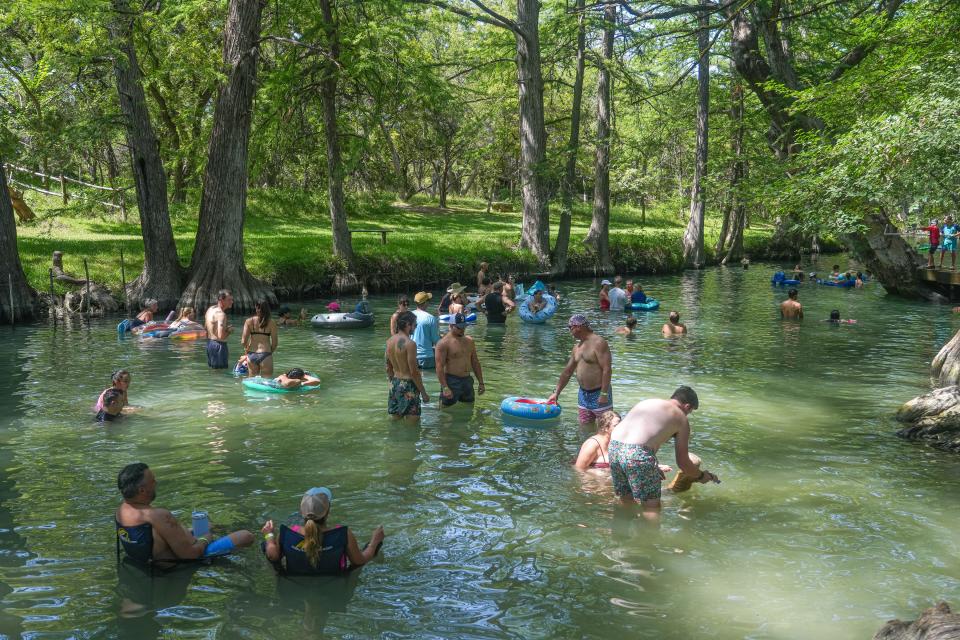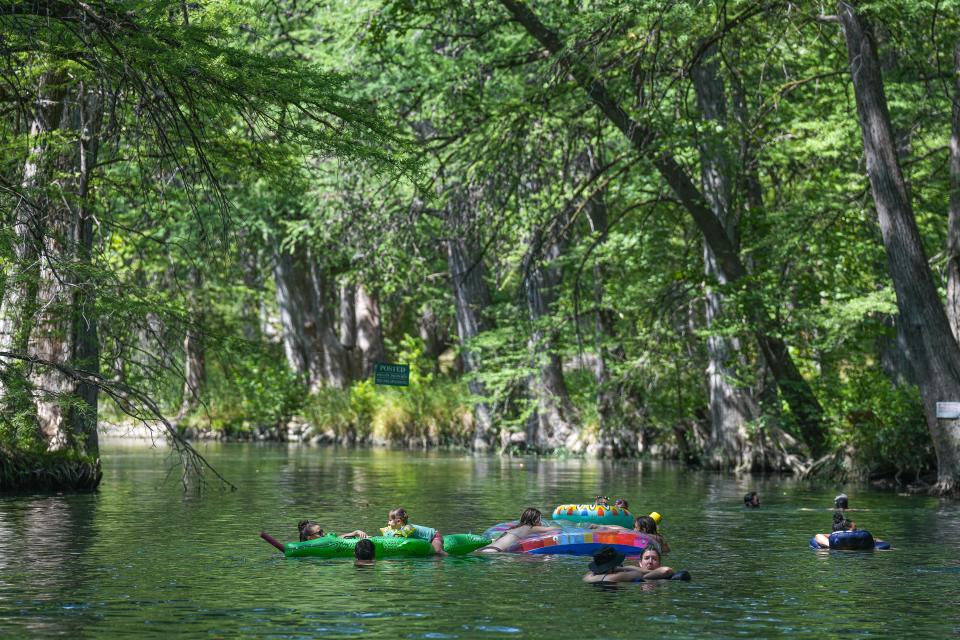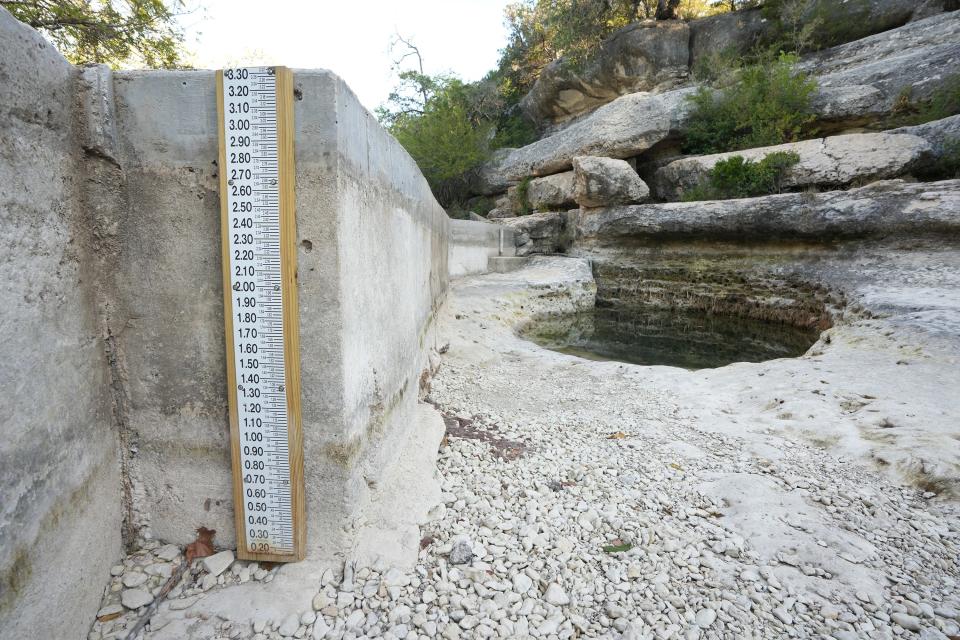What impact is Texas drought having on Austin-area swimming holes? Here's what experts say
Swimming holes across Central Texas are in varying degrees of disarray as a persistent drought grips most of the state and water resources are siphoned by human activity.
Places that once offered Texans unfettered respite from grueling summer heat are drying up, causing them to close for the season or anticipate doing so, experts warned. Local tourism initiatives are falling flat, and wildlife is being irreparably harmed.
Jacob's Well, a popular swimming attraction in Hays County that hosts more than 200 swimmers per day at its busiest, has faced negligible water flow from the spring feeding it for more than a year, said Katherine Sturdivant, parks education coordinator for the county's parks department. Depleted water levels have forced the well to close indefinitely and diminished some of its cultural relevance.
"We've never seen a water level this low and for such an extended period of time. Some may argue that we perhaps have already hit a point of no return," Sturdivant said. "I'm just not quite sure what's going to happen in the future, honestly."

Too hot! Texans grapple with an unrelenting heat wave
Barton Springs Pool in Austin has fared slightly better than Jacob's Well but is slowly approaching dire circumstances. The nationally recognized swimming hole is experiencing a 10-day average water flow of 15 cubic feet per second. Since 1978, the average flow has been measured at 68 cfs, said Shay Hlavaty, a spokesperson for the Barton Springs/Edwards Aquifer Conservation District.
Barton Springs Pool has remained open to customers, but that might change if water flow weakens.

Drought, bacteria, overpumping affect springs' health
Despite the ominous assessments, Sturdivant and Hlavaty remain positive about the swimming holes' futures. Their optimism hinges on the hope for above-average rainfall over the next few years that might help replenish the aquifers fueling them.
An aquifer is a body of porous rock or sediment saturated with groundwater. Travis County is home to three significant aquifers: the prolific Edwards Aquifer, which feeds Barton Springs; the Trinity Aquifer, which fuels Jacob's Well and Blue Hole; and the Colorado River Alluvial Aquifer, which supplies water to local municipalities.
Whether above-average rainfall will come, though, is uncertain. Parts of Central Texas are in the midst of an exceptional drought, the most severe label from the U.S. Drought Monitor. Hays and Travis counties are experiencing severe and extreme drought levels, according to the monitor.
The current drought has lasted for about two years, said John Nielsen-Gammon, the state climatologist and a professor at Texas A&M University. There's no clear indicator of how long it will remain, but weather conditions suggest heightened rainfall during the year's later months.
"Just like La Niña tends to lead to dry conditions during the wintertime, El Niño tends to lead to wet conditions. We already have moderate El Niño conditions present in the (Pacific Ocean)," Nielsen-Gammon said. "That typically starts affecting our weather in mid-to-late fall, so chances are we'll have above normal precipitation from late fall to midspring, and hopefully it'll be enough to end the drought or at least make a serious dent in its intensity."

Is the West's water crisis spreading? Drought blankets Midwest, America's Breadbasket
Despite so many swimming holes being decimated by the drought, Blue Hole, also in Hays County, has remained relatively unscathed.
Richard Shaver, director of the Parks and Recreation Department for the city of Wimberley, which runs Blue Hole, said alternate entrances from the aquifer to Blue Hole have allowed it to remain filled and open to swimmers, though he estimated the swimming hole is only 65% filled.
"This drought has been so devastating last year and moving, of course, into this year, and being able to be open at all for the majority of this season has been such a huge blessing," Shaver said.
Drought, however, is not the only cause for concern. At the beginning of August 2022, Blue Hole shut down for the first time in years due to elevated bacteria levels. In May, Hamilton Pool in Travis County temporarily closed to swimmers after rains causing potentially high levels of bacteria.
So far, Shaver said, the presence of bacteria has not been an issue for Blue Hole in 2023.

Texas Land Trust Council Executive Director Lori Olson said residential and commercial wells reliant on aquifers in the state have also contributed to the depletion of water in the springs. Drought doesn't help the situation, she said, but as more people share the water in aquifers, everyone gets less water.
"There's a lot of straws going in that aquifer right now," Olson said of the Trinity Aquifer. "I think that is something that once those wells get drilled and those straws are capped, essentially, it's going to be hard to reverse."
Swimming hole closures hurt wildlife, communities
When swimming holes dry up, the effects reach well beyond humans, said David Young, a hydrologist with the Texas Parks and Wildlife Department. The drought and other factors have harmful outcomes for fish, plants and other wildlife that rely on those water sources for hydration and habitat.
"(Because of) how water resources are managed throughout the state, environmental water needs and human water needs are tightly coupled," Young said. "When there are shortages, when there's not an abundance to go around for human needs, we start seeing these impacts to the environment first."
To Young's point, Hlavaty said if Barton Springs Pool closed temporarily, it would be to protect two species of salamander native to the area: the Barton Springs salamander and the Austin blind salamander.
Swimming holes also stimulate local economies and businesses through tourism opportunities, Olson said. When they dry up, so do those opportunities. Sturdivant agreed, saying in some cases residents of areas close to springs feel culturally and spiritually connected to them.

Summertime means swimming: Here are some pool safety tips
Julia Schmidt, water resources forester at the Texas A&M Forest Service, said she expects the drought to pass and the environment to heal itself, but not before it wreaks havoc on water sources throughout Texas. If Schmidt's prediction doesn't come to fruition, Sturdivant at least sees it as a learning opportunity.
"Whether or not Jacob's Well ever truly returns, we do just want to keep educating people and talking about what's going on, letting people know what they can do," Sturdivant said. "It's a horrible, horrible experience that we're having here, but it's a really good lesson that we can use to look at how this might happen in other places or how we might see this repeated throughout the future."
This article originally appeared on Austin American-Statesman: Barton Springs, Jacob's Well swimming face danger from Texas drought

